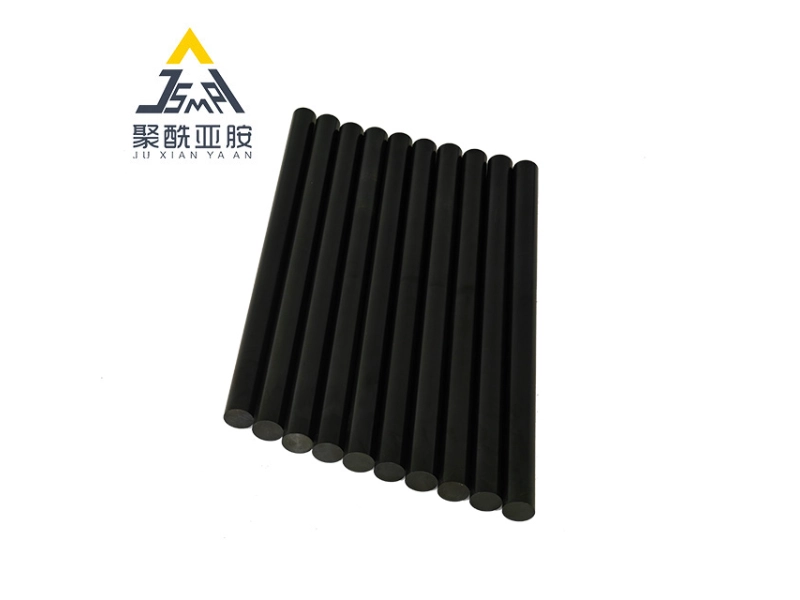Within the constantly changing landscape of advanced technologies, conductive materials play a crucial role in improving performance and capability. Among https://gray-falcon-pq33h2.mystrikingly.com/blog/utilizing-the-potential-of-conductive-polyimide-polyimide-rods , conductive polyimide resin rods have become a critical component, offering a distinct combination of physical strength, thermal stability, and electrical conductivity. These characteristics make them highly sought after in numerous applications, particularly in sectors that demand top-tier materials, such as the aerospace sector.
The aerospace industry, recognized for its rigorous standards and harsh environments, has found a valuable ally in conductive polyimide rods. Such rods not only meet the strict requirements for mass and durability but also provide critical conductive pathways for power systems. As the demand for ultra-light and effective solutions continues to grow, conductive polyimide resin rods are setting the stage for innovation and excellence in cutting-edge technologies.
Overview of Conductive Polyimide Material
Conductive polyimide resin is a premium material that has garnered significant attention in advanced technology applications. Known for its exceptional thermal stability, chemical resistance, and mechanical strength, this resin is widely used in industries that require materials to endure extreme conditions. The incorporation of electrically conductive fillers enhances its electrical conductivity, making it suitable for a range of electronic and aerospace applications.
In the aerospace industry, polyimide rods are particularly crucial due to their ability to endure high temperatures and harsh environments. These rods provide dependable electrical and thermal insulation while maintaining stability, making them vital components in aircraft and spacecraft designs. Their lightweight nature contributes to fuel efficiency and overall performance, which is crucial in aerospace development.
Moreover, the flexibility of conductive polyimide resin allows it to be adapted for specific applications. With varying levels of conductivity and adaptability to various manufacturing processes, these rods can be manufactured for use in flexible electronics, sensors, and other innovative solutions. As the demand for innovative materials continues to grow, conductive polyimide resin rods are poised to play a key role in the evolution of high-performance technologies.
Key Attributes and Benefits
Electrically conductive polyimide resin rods are well-known for their remarkable thermal stability, enabling them to resist high temperatures without compromising their integrity. This property makes them ideal for purposes in the aerospace industry, where materials must operate reliably in high-temperature environments. The potential to preserve mechanical strength at elevated temperatures ensures that these rods can be used in critical components such as insulation, cables, and structural parts that are necessary for flight safety.
Another significant advantage of conductive polyimide rods is their superior electrical conductivity. This quality facilitates their use in advanced electronic applications, particularly in aerospace and defense systems where reliability and consistency are crucial. The rods facilitate efficient electrical interconnections while lowering the risk of signal interference. This makes them especially valuable in the development of compact devices required for next-generation technologies.
Additionally, conductive polyimide resin rods exhibit remarkable chemical resistance, making them suitable for environments where interaction with harsh chemicals and fuels is common. This characteristic is essential for aerospace applications where components are regularly assailed to aggressive substances. Moreover, the rods possess natural mechanical strength and flexibility, allowing for diverse applications across various advanced technological fields, from precision instruments to advanced composites.
Uses in Aviation Industry
Electrically conductive polyimide resin rods are increasingly being employed in the aerospace industry due to their exceptional mechanical properties and thermal stability. The featherweight nature of these rods, together with their high-performance features, makes them ideal for implementations in aircraft structures, insulation components, and various electronic devices found in aerospace technology. Engineers are looking to polyimide rods for their ability to endure extreme temperatures and harsh environmental conditions, which are common in aviation.
In particular, conductive polyimide rods play a key role in the development of cutting-edge avionics systems. These systems require materials that can not just provide structural support but also maintain conductivity for the electronic components. The use of polyimide rods ensures reliable performance of wiring and electronic housings, leading to improved functionality and safety in aircraft. Their resistance to corrosion and neutrality against different chemicals further positions them as a preferred material within aerospace applications.
Furthermore, the future of sustainable aviation technology is anticipated to benefit from the incorporation of conductive polyimide resin rods. As the aerospace industry progresses towards more environmentally friendly practices, the lightweight nature of these materials contributes to fuel efficiency and reduced emissions. Their adaptability allows for integration with other advanced materials, leading to innovative designs that meet the evolving demands of the aerospace sector.
Upcoming Trends in Cutting-edge Technologies

The development of electrically-conductive polyimide resin rods is intimately tied to advancements in the aviation industry. As the demand for light and versatile materials grows, these rods are turning into essential in the development of advanced aircraft and spacecraft components. Future studies will focus on enhancing the conductivity and thermal stability of polyimide materials, enabling them to be integrated into more complex systems, such as sensors and intelligent structural components. This will ultimately lead to enhanced performance and operational efficiency in aerospace applications.
In addition to aerospace, the electronics industry is witnessing a surge in the application of high-performance polyimide rods. With the swift progress of adaptable electronics and wearables, the need for materials that can withstand extreme conditions while preserving excellent electrical properties is paramount. Researchers are exploring the potential of hybrid polyimide formulations that can merge the benefits of various polymers, thus broadening the scope of applications for conductive polyimide rods in advanced devices.
Looking ahead, the eco-friendliness aspect of material development will have a critical role in the future of conductive polyimide resin rods. The movement for green materials is driving scientists to explore biodegradable polyimides and upcycling methods for current materials. This movement toward sustainability not only conforms with global environmental goals but also presents new opportunities for advancement in material science, ensuring that conductive polyimide rods remain at the forefront of advanced technologies.
